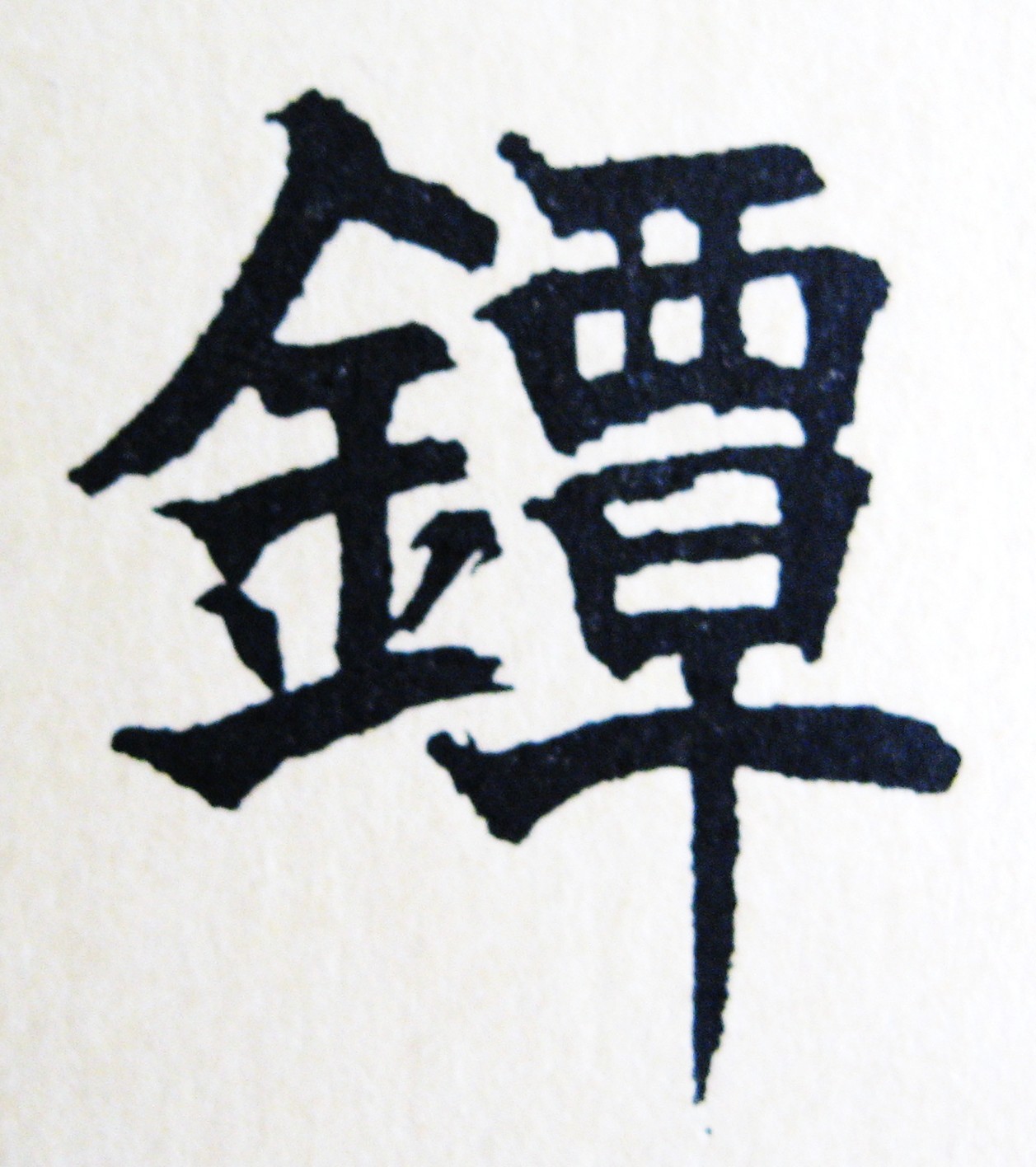|
KAGAMISHI
|
 |
|
KAGAMISHI
|
 |
| Provenance: Elliott Long | $2000.00 |
|
"The yamagane is a nice dark reddish brown color which suggests a relative amount of copper in the alloy. There are areas of green verdigris remaining in the majority of small indentations which highlights the overall design very well. The oblong oval shape, known as hangetsu, of the large kozuka ana is original to the tsuba. Attributed to Kagami-shi dating to ca. 1400 or earlier. The design is of bamboo and both diamond and rounded shapes in a scattered placement with circular 'old mans beard' (see below) occuring on both sides." (Long) |
 |
The bearded Fukurokuju has an unusually elongated forehead. He is typically shown in the customary garments of a Chinese scholar and holding a cane with a scroll attached to it. He may also have a tortoise or crane near him (both creatures are icons of longevity in China and Japan). Fukurokuju probably originated from an old Chinese tale about a mythical Chinese Taoist hermit sage renowned for performing miracles in the Northern Song period (960 and 1279). In China, this hermit (also known as Jurojin) was thought to embody the celestial powers of the south polar star . Fukurokuju was not always included in the earliest representations of the seven in Japan. He was instead replaced by Kichijoten (goddess of fortune, beauty, and merit). He is now, however, an established member of the Seven Lucky Gods. 6.10cm x 6.10cm x 0.50cm (rim), 0.20cm (seppa) |
 |
Purchase this Tsuba by Email to |
|
A Collaboration of Robert E. Haynes and Elliott D. Long |
|
|
| Return To Tsuba Collective Robert Haynes Articles -- Tutorial Email to Shibui Swords |